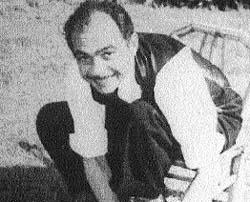Hyderabad, ANDHRA PRADESH (now TELANGANA ) :
When we talk of “Freedom Fighters”, we generally mean those people who fought for the independence of India within the country. Many Indians fought for the freedom of the country from outside India too.
Indian National Army
It was Captain Mohan Singh, an Indian officer of the British Indian Army, who first set up the Azad Hind Fouj (Indian National Army) on the defeat of the British by Japan on February 15, 1942.
Abid Hasan
A young enthusiastic and courageous man from Hyderabad also joined this force. His name was Zain-al-Abdin Hasan. He preferred to be called Abid Hasan and later became known as Abid Hasan Safrani.
Abid Hasan’s mother Hajia Begum was anti-British, so her children were sent to Germany for higher studies. And Abid went to do a degree in engineering.
Meeting with Bose
Netaji addressed a meeting of Indian prisoners of war in Germany and asked them to join the INA. Abid met him and was inspired by the charismatic leader. He told Bose that he would join him after finishing his studies. Netaji said tauntingly that if he was caught in such small considerations, he would not be able to achieve anything big in life. Stung by that remark, Abid decided to give up his studies. He became Netaji’s secretary and interpreter.
Abid Hasan was made a major in the INA. Netaji wanted an Indian form of addressing each other. Abid first suggested “Hello” and was snubbed for that. He later suggested “Jai Hind”, which Netaji liked and adopted it as the formal manner of greeting for revolutionaries and members of INA.Later Nehru used it in his Independence Day address from the ramparts of the Red Fort.
The Indian National Army
INA provided a common kitchen for its soldiers irrespective of their religious affiliations. But there were many differences of opinion within its ranks. One of the controversial issues was the design of the national flag. TheHindus wanted a saffron flag, while the Muslims insisted on green. Later the Hindus gave up their insistence. Abid Hasan was impressed by this gesture that he decided to append “saffron” to his name. Since then, he became to be known as Safrani.
After the famous trial of the INA, all the members of the INA were released. In 1946, Safrani came to Hyderabad and joined the Congress Party. The party was riven with factionalism. Disgusted, he gave up politics and joined the Bengal Lamp Company. He was posted at Karachi. On the partition of India, he came back to Hyderabad.
Diplomatic career
In 1948, he was taken into the newly created Indian Foreign Service. On retirement in 1969, he returned to Hyderabad. Safrani passed away in 1984 at the age of 73.
source: http://www.thehindu.com / The Hindu / Home> Features / Online Edition / by Narendra Luther / Saturday – October 20th, 2001









